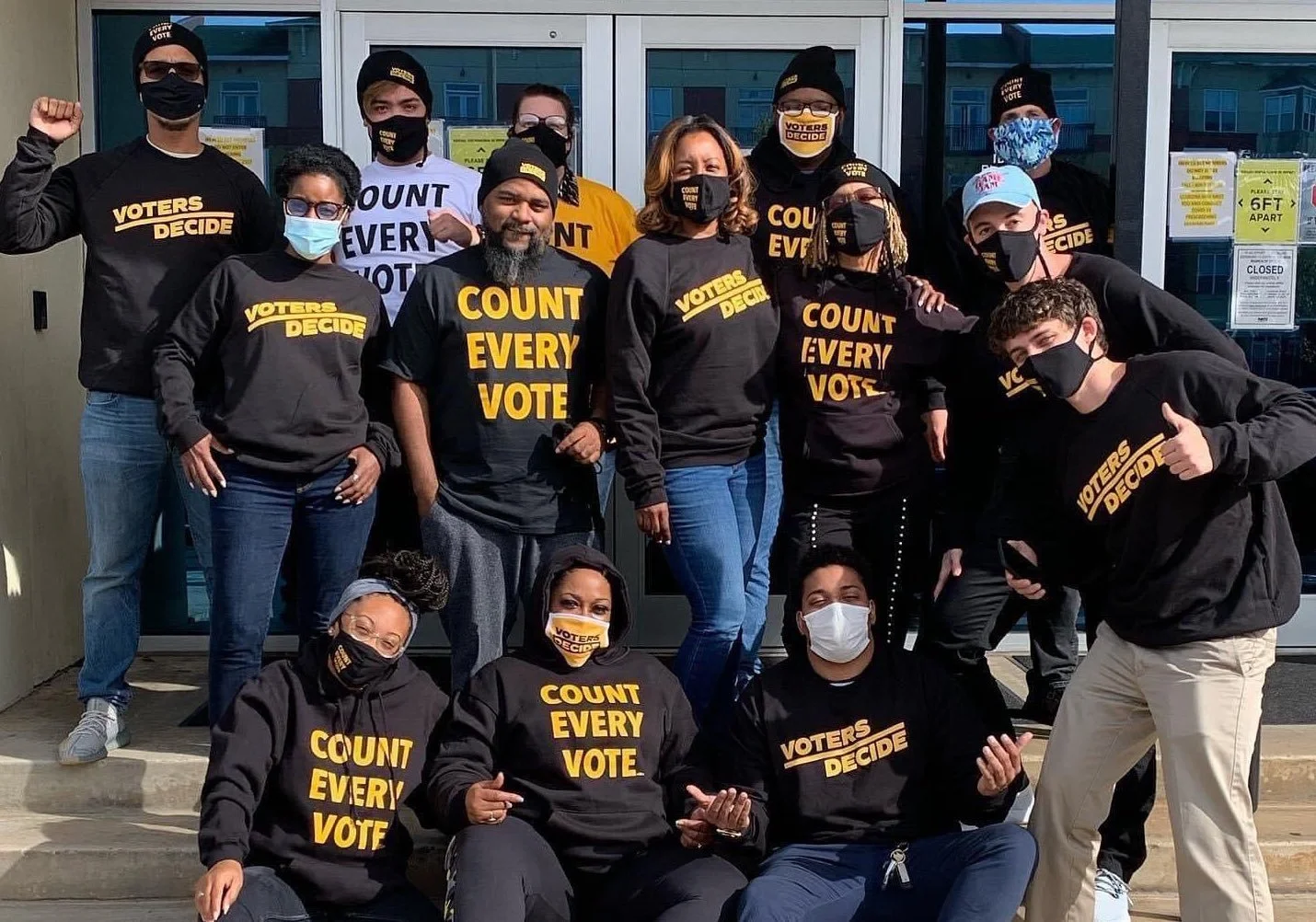Behind a Community Funder's Foray into Voter Engagement
/photo: Barbara Kalbfleisch/shutterstock
Over the past several years, we’ve reported that a range of funders have become more sensitive to the power of social movements, and in many cases, more active in their support. But in the run-up to the midterms, we’re reminded that activist energy must pass through the gateway of electoral politics to achieve lasting impact. Who shows up to the polls matters.
While most foundations have traditionally opted to steer clear of that arena, a national funding community has long existed around civic engagement and voter mobilization. And there’s plenty that funders can legally do to influence who shows up at the polls.
While issues of voting and participation are often discussed in national terms, civic engagement is a local enterprise at its core. As Eric Marshall of the Funders’ Committee for Civic Participation told us last year, “People are best reached by nonprofit organizations that are rooted in that community year-round. National organizations do good work, but if you’re not based in that community, there’s only so much you can do.” Apply that logic to the funding side of the equation, and it’s not hard to see why community foundations have so much potential here.
Related:
Amid Civic Fears, a Democracy Funders Network Is Going Strong
7 Tips for Using Tax-Exempt “Charitable” Gifts to Get Your Candidates Elected
Against the backdrop of today’s divisive politics—and a surge in regional giving—more community funders are exploring this terrain. One case in point is the Fairfield County Community Foundation (FCCF) in Connecticut, which is pairing mini-grants to local nonprofits with programming to encourage voter registration prior to November 6. FCCF’s Get Out the Vote program is its first foray into voter engagement, and it reflects this community funder’s new commitment to advocacy and public policy work.
According to Mendi Blue-Paca, FCCF’s vice president of community impact, the foundation was “previously more policy neutral, but a concerted decision was made to be informed deeply by the communities we serve.” Blue-Paca joined FCCF this year to advance one of the foundation’s key strategic goals: closing the county’s opportunity gap. To do that, she said, “grantmaking is critical, but that’s just one lever. You have to look at the big picture, at the systems that impact the challenges communities face.”
Like the nation at large, Fairfield County is an economically and racially diverse place that struggles with major disparities. The area plays host to lots of wealth, especially on Connecticut’s so-called “Gold Coast.” At the same time, residents of cities like Bridgeport and some rural areas face poverty and a lack of upward opportunities. Unsurprisingly, FCCF found higher levels of civic engagement among Fairfield County’s privileged than among its economically disenfranchised.
The foundation’s inaugural Get Out the Vote grants were modest: only $1,000 each to a set of 18 local nonprofits (10 recipients were planned originally, but FCCF expanded its outlay after an outpouring of interest). By way of comparison, the foundation awarded just over $17 million in grants during the 2017 fiscal year. Its Get Out the Vote grants focused on Fairfield County’s urban centers, where most of the target population lives. They include youth, particularly youth of color, and other historically disenfranchised residents who tend to be less frequent voters. In addition to the mini-grants, FCCF partnered with several of its grantees to hold a voter registration day event on September 25.
FCCF’s initial goal for this program is to get 5,000 more county residents to the polls, both this November and “for years to come.” That might not sound like many, but thousands of votes, or even hundreds, can make a great deal of difference on the local level.
As we’ve observed in the past, community foundations have more reason for reticence around politics than their private peers. They must please diverse stakeholders, and in some places, campaigns directly opposed to Trump administration policies, for instance, may alienate donors. For Get Out the Vote, FCCF selected organizations that weren’t particularly partisan, and stayed clear of potential grantees that strongly favored specific policies. “Our goal is that every individual should be knowledgeable enough and tapped-in enough to engage,” Blue-Paca said.
While its initial scale is small, Blue-Paca anticipates FCCF’s civic engagement work to continue beyond November, perhaps with a greater emphasis on voter education. To that end, the foundation wants to continue working with regional partners pursuing similar goals. Those partners include the Community Foundation for Greater New Haven, the Hartford Fund for Public Giving, and a new statewide funder collaborative for civic engagement currently being driven by the Connecticut Council for Philanthropy.
Those efforts are still getting off the ground. But with their deep knowledge of local nonprofits and local politics, community funders may be best poised to develop impactful networks for civic engagement. Whether they possess the resources to do so depends on local donors, to be sure, but national philanthropy could also play a role. According to Blue-Paca, one of the best ways for large foundations to galvanize civic participation is to leverage their strengths—like research and expertise—to support organizations with deeper local knowledge.
In the end, the wider project of voter mobilization depends on Americans’ level of trust in democratic institutions, a trust that big money has done a great deal to corrode. If philanthropy is to assert itself more effectively as a force for the promotion of democracy, it’ll be vital to operate on the local level, but also to learn from and amplify the voices of local advocates.
Related:







































